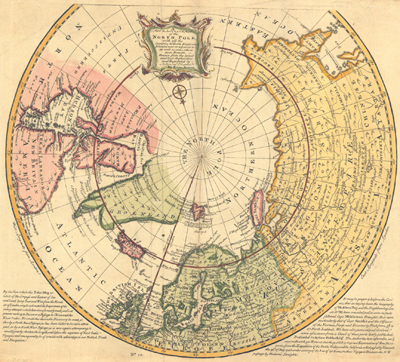Scott Polar Research Institute
August 20, 2008 at 2:30 pm | Posted in Education, Research | Leave a commentTags: antarctica, arctic, institute, library, North Pole, polar, Research, scott polar research institute, spri
Another cold website, this time is the turn of Scott Polar Research Institute:
Scott Polar Research Institute
Welcome to SPRI
The Institute is a well-known and long-established centre for research into both polar regions. It is part of the University of Cambridge and is a sub-department of the Department of Geography.
We have several research groups investigating a range of issues in both the environmental sciences and social sciences of relevance to the Arctic and Antarctica. Our polar library, which includes the Shackleton Memorial Library, has comprehensive holdings of scholarly books and journals on polar research, with exceptional archival collections from the exploration of the Antarctic and Arctic. We also have extensive online resources, including bibliographic and other information.
Around 60 academic, library and support staff, together with postgraduate students, associates and fellows attached to our research programmes, are working in the Institute, providing a strong core of intellectual activity focused on the Arctic and Antarctic and their adjacent seas.
We offer two Graduate Degree courses; a one-year Master’s Degree (M.Phil.) course in Polar Studies, and a three-year Doctoral Degree course, leading to a Ph.D. degree. Both courses are closely tied to the research activities of the Institute.
Research
We have several research groups investigating a range of issues in the environmental sciences, social sciences, arts and humanities of relevance to the Arctic and Antarctica:
– Glaciology and Climate Change Group.
– Glacimarine Environments Group.
– Polar Landscape and Remote Sensing Group.
– Polar Social Science and Humanities Group.
– Circumpolar History and Public Policy Research Group (HiPP).In addition, the Institute is part of the NERC Centre for Polar Observation and Modelling.
The most interesting part for my project is the Polar Science and Humanities Group. They are running a bunch of interesting projects:
Polar Social Science and Humanities
Staff and students
The following scientists at the Scott Polar Research Institute are involved in the activities of this research group:
– Academic staff: Dr Michael Bravo, Dr Piers Vitebsky.
– Institute Associates: Prof Valerie Alia:(indigenous and northern media; media representations of polar peoples; Inuit naming; names, identities, politics and power; media ethics; research ethics), Keith Hill (transport, telecommunications and economic development in the Russian Far East; 18th century German scientists in Siberia), Dr Florian Stammler, Dr John Tichotsky (Regional economic development in Siberia, Alaska, Mongolia and China), Dr Emma Wilson.Research students
– Elizabeth Beiswenger: indigenous political representation and self-government in the Chukotka Autonomous Region.
– Mark Dwyer: spatial modelling of pasture use by Komi reindeer herders
– Janne Flora: suicide and personhood in Greenland.
– Stephanie Irlbacher Fox: the development of political institutions in the Canadian North.
– Otto Habeck: the future of reindeer husbandry in the Komi Republic
– Sean Maher
– Traplines and Tar Sands: an Ethnographic Analysis of Intersecting Economies in a Subarctic Indigenous Community.
– Richard Powell: field practices and environmental science in the Canadian Arctic, 1950-2000.
– Hugo Reinert: political epistemology of reindeer herding in the Norwegian Arctic.
– Elena Khlynovskaya Rockhill: the institutionalisation of children in Magadan.
– Steven Sawhill: environmental diplomacy in the Barents Region; the decentralisation of foreign affairs.
– Olga Ulturgasheva: narrative and concepts of memory among the Eveny of northern Sakha (Yakutia).
– Sam Van Vactor: energy economics and gas pricing in northeast Asia
Kostas Zorbas; patients’ experience of shamanic healing in Tuva, Siberia
Movements: A Comparative Study of Nunavut, Canada and Tuva, Russian Federation.
It is a pity they do not have RSS to follow them. I will have to come back to the old method: memory!
From a new perspective
March 11, 2008 at 3:49 am | Posted in Maps, North Pole | Leave a commentTags: arctic circle, map, North Pole, old, today
We usually look at the world globe with the Ecuador line in front of our eyes. In the same way, we use to represent the maps in two dimensions. But if what you want is to take a journey all around the world more or less through the
arctic cercle line, and having as a reference the North Pole, there is a much more interesting perspective:

Map by William Moor and Francis Smith, 1746-1747

Mapa of the international polar stations, 1882-83

The North Pole nowadays, with red line that indicates the 10°C (50°F) isotherm in July, sometimes used to define the Arctic region border
Blog at WordPress.com.
Entries and comments feeds.